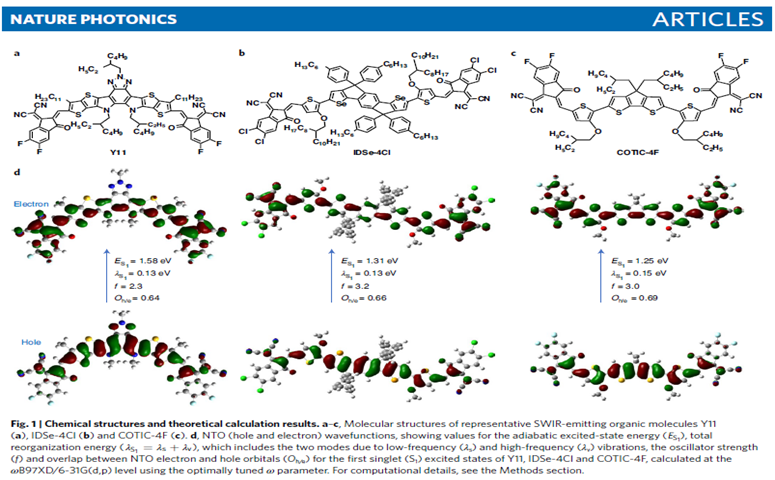
Published on nature photonics (29 September 2022)
Author(s): Yuan Xie, Wansheng Liu, Wanyuan Deng, Haimei Wu, Weiping Wang, Yichuan Si, Xiaowei Zhan, Chao Gao, Xian-Kai Chen, Hongbin Wu, Junbiao Peng & Yong Cao
Abstract
Organic LEDs that emit light in the short-wavelength infrared (SWIR) region, which spans the 1–2 μm region, are attractive for applications in biosensors, biomedical imaging and spectroscopy, and surveillance. However, fabrication of such devices with high radiance has not yet been achieved owing to an intrinsic limitation imposed by the energy-gap law, which leads to extremely low emission efficiencies. Here, we report that acceptor–donor–acceptor-type molecules with high coplanarity, rigid π-conjugated backbones, an extremely small reorganization energy and an electron–phonon coupling factor are capable of simultaneously providing a strongly suppressed non-radiative recombination rate and a high operation stability at high current density. We achieve electrically driven SWIR organic LEDs with an irradiance of up to 3.9 mW cm−2 (corresponding to 7% of direct sunlight infrared irradiance). These findings should open a wide avenue to a new class of organic SWIR light sources for a broad range of applications.

Read more: https://www.nature.com/articles/s41566-022-01069-w